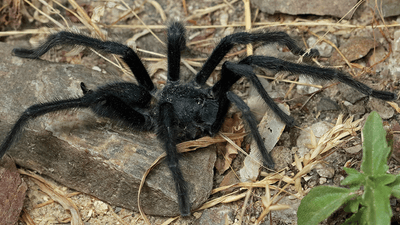Four new tarantula species have been discovered in the Arabian Peninsula and the Horn of Africa. While that is remarkable in itself, what makes these four new tarantulas stand out from other known species is their surprisingly long schlongs.
The rest of this article is behind a paywall. Please sign in or subscribe to access the full content.Technically, tarantulas don’t have penises; instead, they possess specialized appendages called palps that are used to transfer sperm to the female during mating. “The new genus is partially characterised by possessing the longest male palps known in tarantulas, possibly functioning in cannibalism avoidance during mating,” explain the authors of a new paper describing them.
The team has created a new genus for the four new species called Satyrex, based on the part-man, part-beast Satyrs from Greek mythology who were known for their large genitalia and "rex", meaning "king". All of the new species in this genus are fossorial, meaning that they live underground and are found at the base of plants or between rocks on the ground.
One species has been named Satyrex ferox because of its ferociousness; it has been observed that both sexes of this species are highly defensive. The tarantulas can even emit a loud warning sound. This particular species is found in Oman and Yemen and is the largest of the four new spider species with a legspan of around 14 centimeters (5.5 inches). Surprisingly, the palp of the male can reach 5 centimeters (1.9 inches) long, almost as long as the longest legs of the tarantula.
“This species is highly defensive. At the slightest disturbance, it raises its front legs in a threatening posture and produces a loud hissing sound by rubbing specialized hairs on the basal segments of the front legs against each other,” Dr Alireza Zamani, study first author, told Pensoft Blog.
One other species (M. longimanus) was already known to scientists but is believed to have been originally misplaced in the genus Monocentropus, and is now moved to the Satyrex genus, which includes the four new species. All these five species can be identified by their elongated palps, which the authors think are an adaptation to carry out mating while minimizing the risk of being eaten by the female, as it allows the males to be slightly away from the female rather than directly underneath her during the mating process.
However, the team also acknowledges that this is a tentative idea at this stage, and more observations of the mating behaviors in these five species would have to be observed in the wild to reach a conclusion.
The paper is published in ZooKeys.





